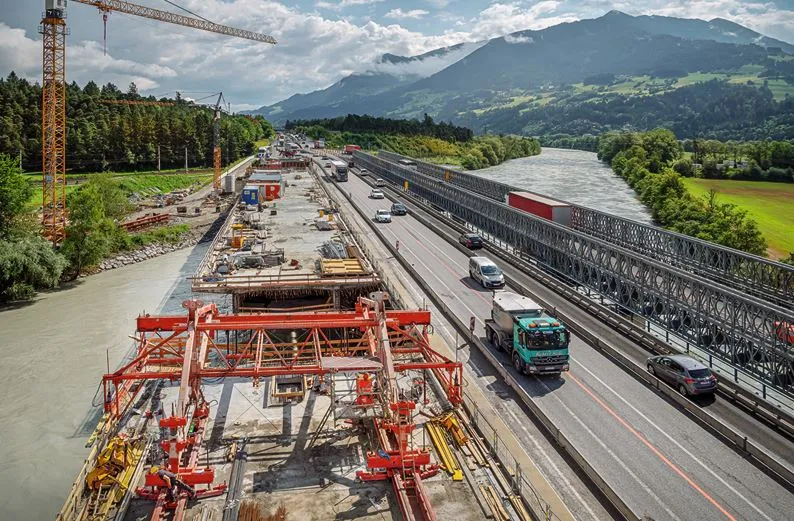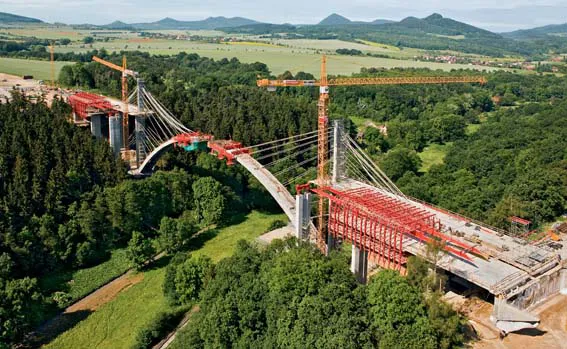
The A12 motorway winds its way for around 150km through the heart of Austria’s Tyrol. It starts at Kufstein on the German border and passes the city of Innsbruck on its way to the municipality of Zams. The section through the Inntal valley provides the backdrop for the Inntalbrücke - a 235m-long bridge. Around 60,000 vehicles use the Inntalbrücke daily to get from one side of the Inn River to the other.
The two existing steel composite bridges are being replaced by two new bridge support structures made of pre-stressed concrete. Contractor for the project is ARGE (PORR/Strabag). The project used the cantilever construction method carried out according to the beam principle. It saw the superstructure erected in relatively short sections starting from the piers, using a cantilever carriage.
Peri engineers assumed responsibility for the project-specific planning process and the static calculations for the balanced cantilever carriage. By using the VBC Balanced Cantilever Carriage including formwork, Peri provided a tailor-made, comprehensive solution – from the planning phase right through to the final product and even onsite support. This meant that all of the systems and processes were optimally coordinated, thereby minimising potential sources of error and interface losses.
Peri’s VBC Balanced Cantilever Carriage could be made available at short notice because it is based on Peri’s rentable VARIOKIT Engineering Construction package. The first delivery of materials was in January 2019; the first concreting process was done only two months later.
The decision to use the VBC Balanced Cantilever Carriage meant that 5.7m-long concreting sections could be completed. This required only four cycles per bridge support structure: a total of eight during the project.
Highly flexible
The fact that the system is highly flexible and easy to align meant that the respective segments could be concreted in weekly cycles. The fully integrated hydraulic unit simplified the adjusting and calibrating of the formwork from one section to the next. Given the fact it is convenient to operate, the system could be moved to the next cycle quickly and easily.
Flexibility of the VBC
Balanced Cantilever Carriage proved extremely useful. For example, the presence of the longitudinal cantilevered slab retaining wall in the area of the abutment - which runs from the upper edge of the foundation up to the lower edge of the cantilevered slab - meant that it was necessary to alter the projection of the cross girders in the grate and to have a supporting structure spacing of only 50cm.
The formwork carriage was advantageous also when concreting the carriageway slab because, being positioned on the M24 tie sleeves, the slab formwork reduced the degree of penetration into the supporting structure.
The balanced cantilever carriage was also comparatively straightforward to dismantle. The time-consuming process of lowering the rails to retract the carriages was not required.
The construction site team and the Peri engineers have had to overcome some challenges over the course of the project. The area around the Terfener Innbrücke is in an earthquake zone. As such, the structural calculations used for both the bridge support structure and the balanced cantilever carriage had to allow for seismic loads.
For the duration of the project, a supervisor provided the team with regular onsite support with activities such as assembling the supporting structure, operating the VBC Balanced Cantilever Carriage, switching to the next hammer head and dismantling the formwork carriage.









